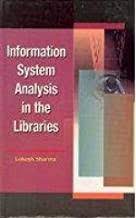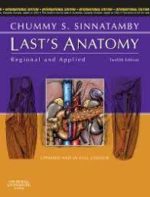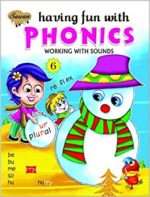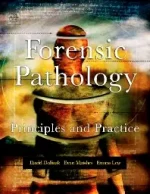-
The Last Week: What the Gospels Really Teach About Jesus’s Final Days in Jerusalem Paperback
KSh 1,300.00Top Jesus scholars Marcus J. Borg and John Dominic Crossan join together to reveal a radical and little-known Jesus. As both authors reacted to and responded to questions about Mel Gibson’s blockbuster The Passion of the Christ, they discovered that many Christians are unclear on the details of events during the week leading up to Jesus’s crucifixion.
Using the gospel of Mark as their guide, Borg and Crossan present a day-by-day account of Jesus’s final week of life. They begin their story on Palm Sunday with two triumphal entries into Jerusalem. The first entry, that of Roman governor Pontius Pilate leading Roman soldiers into the city, symbolized military strength. The second heralded a new kind of moral hero who was praised by the people as he rode in on a humble donkey. The Jesus introduced by Borg and Crossan is this new moral hero, a more dangerous Jesus than the one enshrined in the church’s traditional teachings.
The Last Week depicts Jesus giving up his life to protest power without justice and to condemn the rich who lack concern for the poor. In this vein, at the end of the week Jesus marches up Calvary, offering himself as a model for others to do the same when they are confronted by similar issues. Informed, challenged, and inspired, we not only meet the historical Jesus, but meet a new Jesus who engages us and invites us to follow him.
-
Information System Analysis in The Libraries
KSh 6,630.00The present book ‘Information systems analysis in the Libraries’ defines “Systems Study” in the libraries, its planning and organization starting with various steps like analyzing procedures, surveying and looking into its methods and results in a scientific way. Designing and redesigning a system for betterment looking into sub-systems like acquisition, circulation, serial control etc. to function effectively in a modernized way. In brief, the book gives a comprehensive account of system-approach in the field of librarianship. The book is intended to be used widely as a textbook in the area of systems study for the students of library and information science.
-
Last’s Anatomy, International Edition, 12th Edition
KSh 14,000.00This regional textbook of anatomy is aimed at trainee surgeons and medical students. Throughout it is rich in applied clinical content, knowledge of which is essential for both clinical examination and surgical procedures. Although regional in approach each chapter is structured to clearly explain the structure and function of the component systems. The author brings his continuing experience of teaching anatomy to trainee surgeons to ensure the contents reflects the changing emphasis of anatomical knowledge now required.
-
The Honeymoon
KSh 400.00A beautifully crafted, gently funny and surprising debut novel set at the end of the 20th century, an arresting depiction of the dangers of privileged and desultory lives.The first time that Gordon meets Annie they make love in a park. Soon afterwards, on the 44th anniversary of D-Day, they are married. Gordon, though American-born, has never had a home; instead, he led a life of barren privilege, travelling through the capitals of Europe with his mother. Over the course of a year in London, Gordon and Annie construct an idea of married life for themselves, until their long-delayed honeymoon finally takes them to Venice. But once there, the city’s brilliance seems to distort rather than illuminate, and the story gathers an almost unbearable intensity before — in a single act of absurd but devastating vilolence — their bubble is pricked and the emptiness at the core of their gilded lives revealed
KSh 650.00 -
Having fun with Phonics working with sounds 6
KSh 695.00Explore our phonics workbook designed for learning 2 and 3 letter sounds, while having fun with phonics through engaging activities and exercises.
This is another workbook in phonics series to learn 2 letter & 3 letter vowel & consonant sounds along with walls, digraphs, mixed letters, syllables, suffix, sight words.
-
A Minute to Midnight
KSh 400.00FBI Agent Atlee Pine returns to her Georgia hometown to reopen the investigation of her twin sister’s abduction, only to encounter a serial killer beginning a reign of terror, in this page-turning thriller from #1 New York Times bestselling author David Baldacci.
FBI Agent Atlee Pine’s life was never the same after her twin sister Mercy was kidnapped–and likely killed–thirty years ago. After a lifetime of torturous uncertainty, Atlee’s unresolved anger finally gets the better of her on the job, and she finds she has to deal with the demons of her past if she wants to remain with the FBI.
Atlee and her assistant Carol Blum head back to Atlee’s rural hometown in Georgia to see what they can uncover about the traumatic night Mercy was taken and Pine was almost killed. But soon after Atlee begins her investigation, a local woman is found ritualistically murdered, her face covered with a wedding veil–and the first killing is quickly followed by a second bizarre murder.
KSh 995.00 -
151 Goodnight Stories
KSh 895.00Goodnight stories book is a store-house of most fabulous and popular 151 stories. Each tale in the book has been written in a very lucid language accompanied by coloured illustration that adds to its beauty manifold. Young and old alike are sure to get lost in the world of these tales which hold the reader spellbound.
-
Salamis : The Greatest Naval Battle of the Ancient World,
KSh 795.00“Salamis” tells the story of possibly the greatest naval battle of the ancient world. Involving hundreds of thousands of combatants and well over a thousand triremes – the ranking naval war engine of the time – it was the culminating battle in a twenty-year struggle between the Persian Empire and the Greeks. Against all odds – and with the help of a little treachery, a brilliant strategy and a lucky wind – the Greeks defeated the Persians, and with it began the roll-back of the Persian Empire, and the beginning of the Hellenic imperium. This epic tale is told through the individual stories of twelve characters, six form each side, each of which played a major role in the battle and its aftermath.
-
Diseases of Ear,Nose and Throat-3rd edition
KSh 12,200.00Diseases of Ear, Nose and Throat, 3rd Edition (2021) by Mohan Bansal offers a comprehensive, CBME-based guide to ENT disorders with clear explanations, clinical insights, and practical management for medical students and practitioners.
The book presents diseases of the ear, nose and throat (ENT) in a concise yet comprehensive format, aimed principally at medical students and trainees in ENT.
It follows the newer competency-based medical education (CBME) curriculum for ENT (GMER 2019) of the NMC/MCI in India.
The content is structured with an emphasis on clinical diagnosis, patient management, and practical aspects rather than only academic theory.
It also includes sections on allied themes: anatomy, physiology, pathology; clinical skills and diagnostic/therapeutic procedures; community medicine; ethics and communication (AETCOM); emergencies in ENT; and management of diseases of different areas (ear, nose & sinuses, oral cavity & salivary glands, pharynx & oesophagus, larynx, neck) as well as operative procedures/instruments.
-
Forensic Pathology Principles and Practice
KSh 60,000.00Forensic Pathology is a comprehensive reference that uses a case-oriented format to address, explain and guide the reader through the varied topics encountered by forensic pathologists. Developed in response to a severe void in the literature, the book addresses topics ranging from medicolegal investigation of death to death scene investigation, forensic autopsy, and artifacts of resuscitation as well as complications of medical therapy, forensic osteology, forensic odontology, forensic photography, and death certification. The book includes various types of cases, including sudden natural death, asphyxia, motor vehicle collisions, death in custody, child abuse and elder abuse, acute psychiatric and emotional deaths, and pregnancy. It contains sample descriptions of pathological lesions which serve to aid pathologists in reporting their findings to law enforcement agencies, attorneys, and others involved in investigations of sudden death. The concepts outlined in the text are beautifully illustrated by large, colorful photographs. There are also “Do and Don’t” sections at the end of each chapter that provide guidance for handling the types of cases examined. This work will benefit not only experienced forensic pathologists, but also hospital pathologists who occasionally performs medicolegal autopsies; doctors in training; medical examiners; law enforcement personnel; crime scene investigators; attorneys; and fellows and students of the medical sciences.










